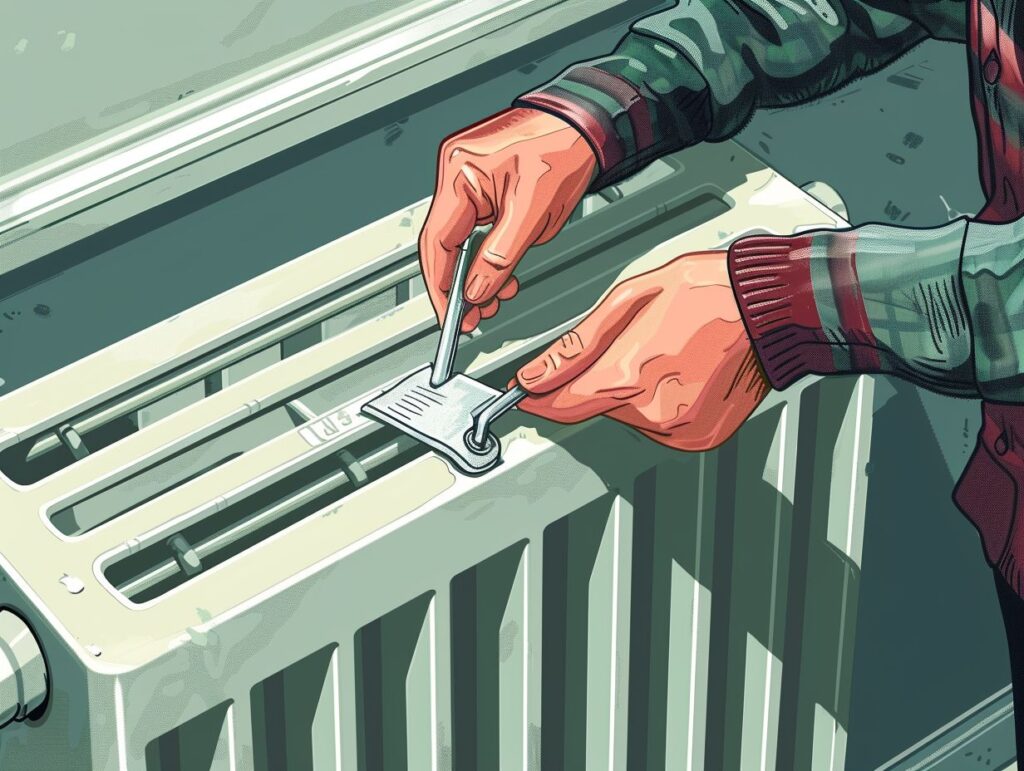Traditional radiators are a common feature in many homes, providing warmth and comfort during the colder months. As a homeowner, you may encounter air becoming trapped in these radiators, which can have a negative impact on their efficiency.
In this discussion, we will explore the various types and components of traditional radiators, emphasize the importance of bleeding them, outline the necessary tools and materials required for the task, provide a step-by-step guide on how to bleed traditional radiators, and address common troubleshooting issues that may arise.
By learning how to properly bleed your traditional radiators, you can ensure they run smoothly and effectively, maintaining optimal performance in your home.
Key Takeaways:
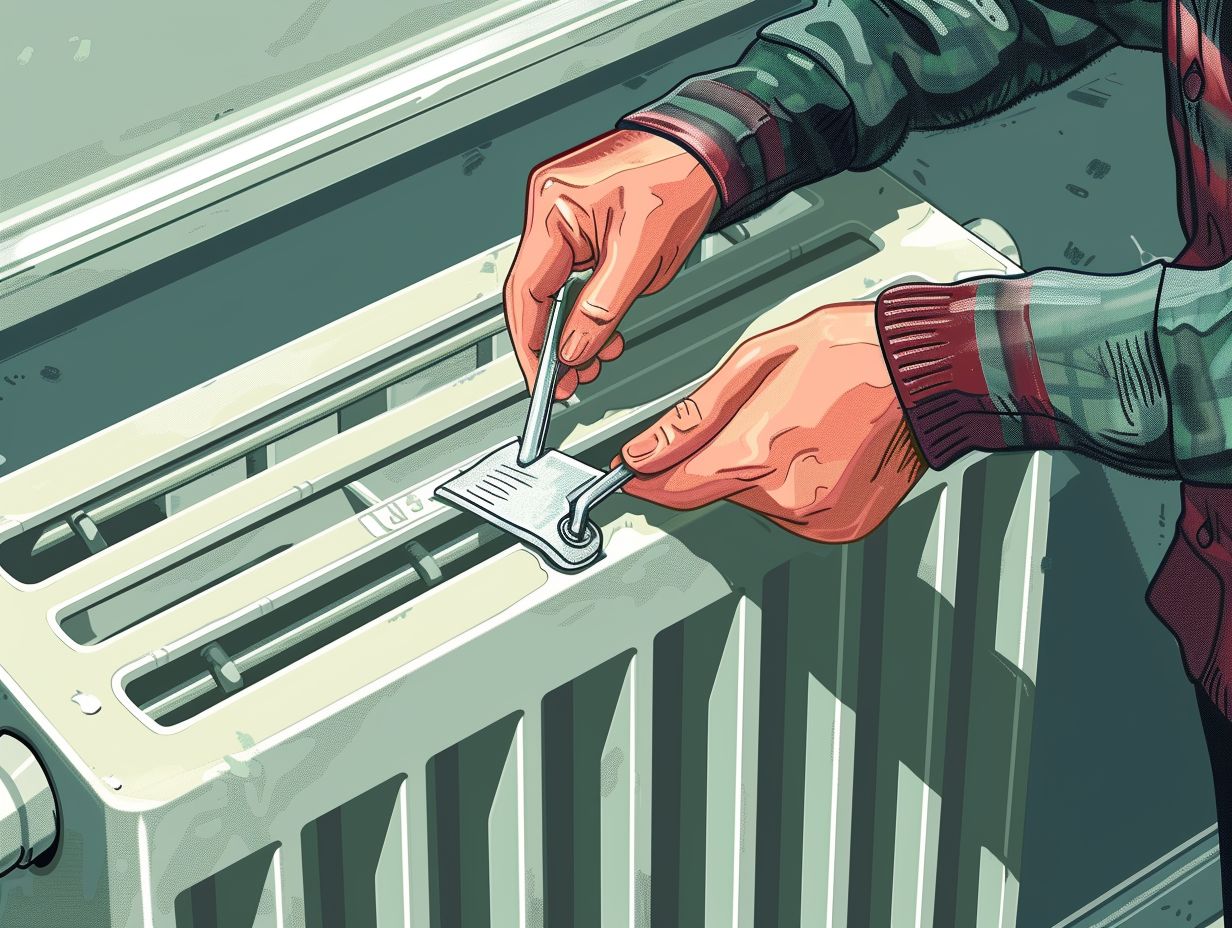
- Regularly bleeding traditional radiators is essential for maintaining efficient heating and avoiding potential risks such as corrosion and system failure.
- The process of bleeding a radiator involves using simple tools and materials such as a radiator key and towel, making it an easy and cost-effective task.
- Follow a step-by-step guide to properly bleed traditional radiators, starting with turning off the heating system and releasing air through the bleed valve until water comes out.
Understanding Traditional Radiators
Understanding traditional radiators is crucial for effectively managing the heating system in your home. You depend on traditional radiators, often known as Trads, to distribute heat evenly across rooms by using a system of hot water flowing through them.
This method guarantees that the heat produced by the heating system is distributed effectively throughout the area, creating a comfortable atmosphere.
The elements of traditional radiators, like the metal panel and fins, optimise the surface area for heat exchange, enabling an efficient transfer of warmth to the air. Through effective heat radiation, Trads play a vital role in enhancing the overall heating efficiency of a room.
Types and Components
Traditional radiators come in various types and are composed of different components like valves, pipes, and control systems. The process of heating involves circulating hot water through the radiator’s system, which then radiates heat into the room.
You can classify these radiators into two main types: steam radiators and hot water radiators. Steam radiators have a unique mechanism where steam enters the radiator, condenses, and releases heat. On the other hand, hot water radiators operate by circulating hot water from a boiler through the system.
The valves within the radiator control the flow of water or steam, ensuring that the desired temperature is maintained in the room. Understanding how these components interact is essential for efficient operation of traditional radiators.
Why Bleeding Traditional Radiators is Important
Bleeding traditional radiators is a crucial maintenance task that you should perform to eliminate trapped air that could result in cold spots and inefficiencies within your heating system. By bleeding your radiators, you will guarantee efficient circulation of hot water, thus optimising the heat output in your home.
This straightforward procedure can have a significant impact on the comfort level of your living space, ensuring that each room receives the full advantage of the heating system. Cold spots can interrupt the warmth in a room, leading to discomfort, especially during colder months.
Regularly bleeding your radiators enables you to uphold a consistent and comfortable temperature throughout your home. A properly bled system operates more quietly and contributes to lower energy bills by ensuring even distribution of heat, thus preventing unnecessary overheating in certain areas.
Benefits and Risks of Air Trapped in Radiators
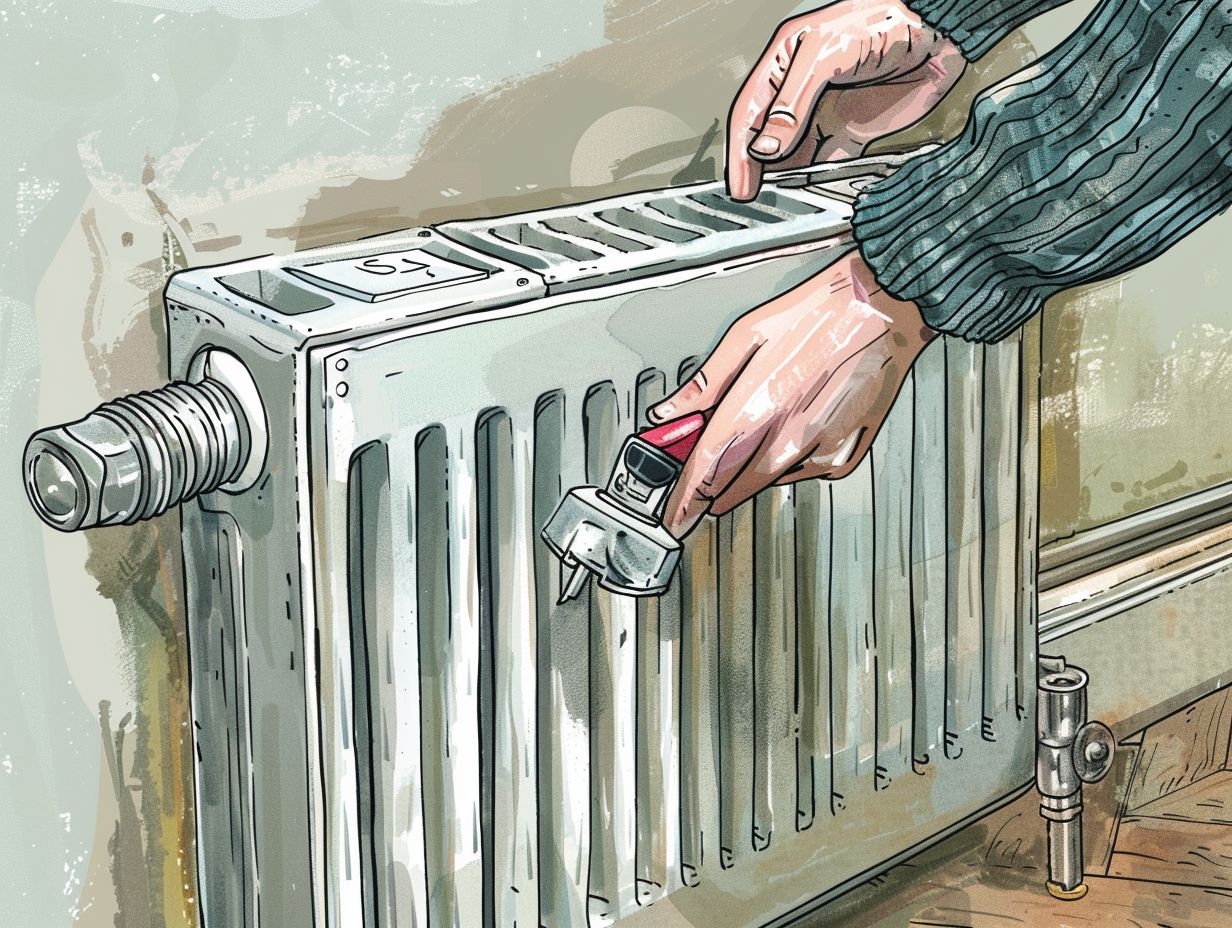
The presence of air trapped in your traditional radiators, often caused by improper bleeding, can significantly reduce the efficiency of your heating system. This trapped air can result in decreased pressure in the boiler, leading to less heat being produced by the radiators. It is crucial to utilise a bleed key to release trapped air in order to maintain optimal performance.
As air accumulates in your radiators, it creates blockages that disrupt the smooth flow of hot water, impeding the effective distribution of warmth throughout your space.
This inefficient heat distribution not only compromises comfort but also increases energy consumption as the system works harder to compensate for the trapped air.
Regular bleeding of your radiators ensures that your system operates at peak efficiency, reducing the risk of costly repairs in the long term and fostering a comfortable living environment.
Tools and Materials Needed
For bleed traditional radiators effectively, you will require several tools and materials. These include a towel to catch any water drips and a radiator key to open the bleed valve. These basic items are crucial for completing the bleeding process smoothly.
It is advisable to wear a pair of gloves to shield your hands from hot water splashes while carrying out the bleeding procedure. Additionally, having a bucket or container nearby can be useful for collecting the released air and water mixture during the bleeding process.
Furthermore, it is recommended to have a cloth or rag readily available to wipe down the radiator and surrounding area once the bleeding is finished, ensuring a neat and tidy completion of the process.
By having these tools and materials on hand, you can effectively maintain your traditional radiators and guarantee optimal heating performance.
Essential Supplies for Bleeding Radiators
When preparing to bleed your radiators, make sure you have the necessary supplies on hand, such as a bleed key, a towel, and a basic understanding of your heating system. It is crucial to address cold spots caused by trapped air in order to maintain an efficient heating system.
If you neglect these cold spots, you risk experiencing uneven heating in your home, which could lead to increased energy costs. By bleeding your radiators, you release any trapped air, allowing hot water to flow freely and heat your rooms efficiently.
This simple maintenance task can have a significant impact on the overall comfort and energy efficiency of your heating system. Investing in a bleed key and towel, which are affordable tools, will enable you to easily complete this task and ensure that your heating system operates smoothly.
Step-by-Step Guide to Bleeding Traditional Radiators
Bleeding traditional radiators is a straightforward process that involves using a bleed key to open the bleed valve and release trapped air. This step-by-step guide will help you efficiently bleed your radiators to ensure optimal heating performance.
- To begin, locate the bleed valve on each radiator; this is typically found at the top and looks like a small square nut.
- Place a towel or cloth underneath the valve to catch any water drips.
- Next, insert the bleed key into the slot on the valve and slowly turn it anti-clockwise. You should hear a hissing sound as the air escapes.
- Once water starts to trickle out steadily, quickly close the valve using the key to prevent any leaks.
- Remember to check the pressure gauge on your boiler afterwards to ensure it is at the recommended level.
- Repeat this process for all radiators in your home to fully bleed them and maximise their efficiency.
Preparation and Procedure
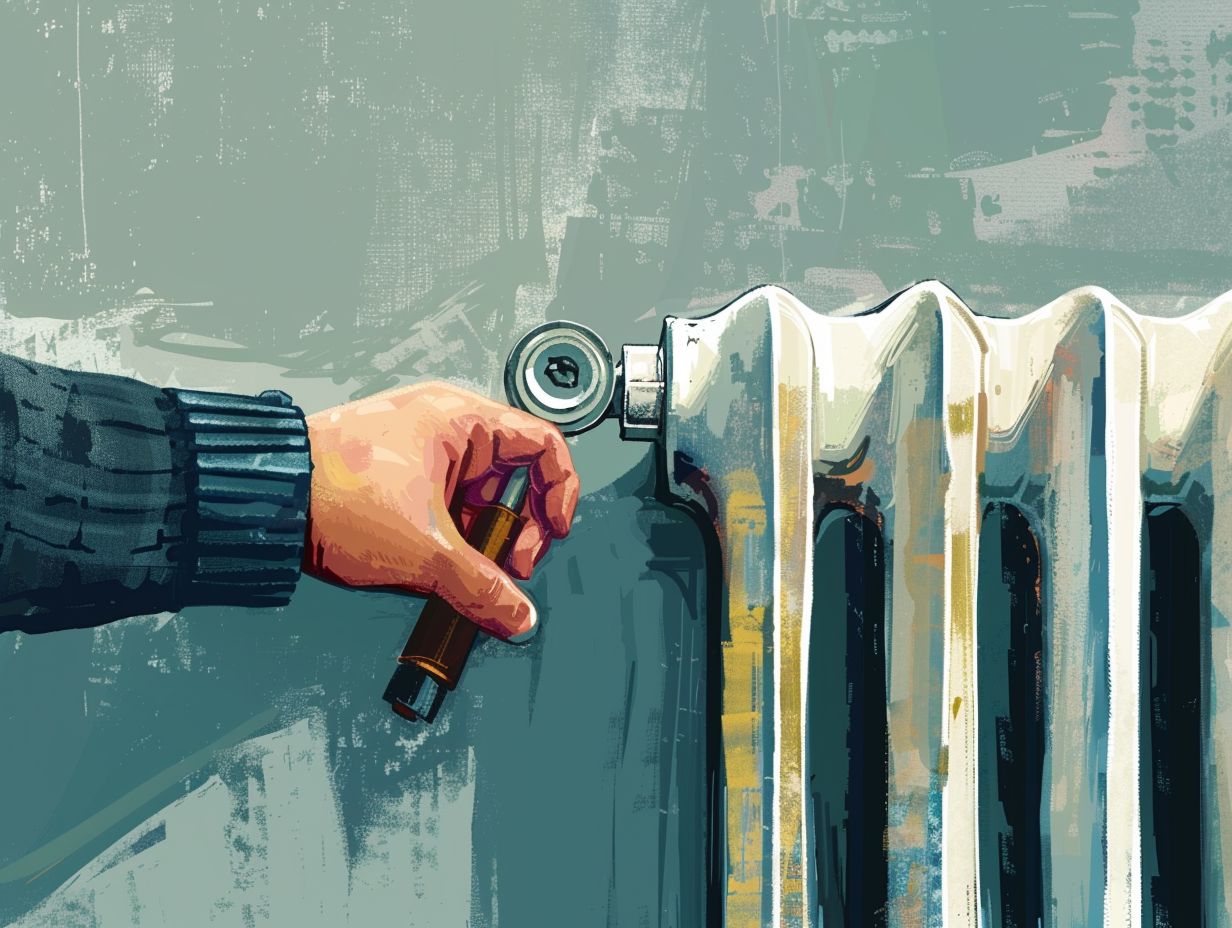
Before you start the bleeding process, set aside some time each year to bleed all radiators for optimal efficiency. Make sure you have a bleed key at hand to effectively remove trapped air during the procedure.
It is essential to schedule this maintenance task as part of your annual home upkeep routine, as it can significantly enhance the performance of your heating system. Choose a time when the heating is turned off to allow the radiators to cool down before bleeding.
By having a bleed key readily available, you will be prepared to release trapped air, preventing cold spots and improving the overall distribution of warmth in your living space.
Bear in mind that a well-maintained heating system not only enhances comfort but also reduces energy consumption, leading to long-term cost savings.
Troubleshooting Common Issues
Troubleshooting common issues with traditional radiators, such as strange hissing noises or malfunctioning valves, is crucial for maintaining a properly functioning heating system. Understanding how to address these issues promptly can prevent further damage and ensure efficient heat distribution.
If you notice a hissing sound coming from your radiator, it could be due to trapped air within the system. To resolve this, bleed the radiator by using a bleed key to release the air. Remember to turn off the heating system before attempting this.
In the case of malfunctioning radiator valves, it is important to check for any leaks or blockages. Sometimes, a simple cleaning or tightening of the valves can resolve the issue. Remember that regular maintenance and proper care of your radiators can help prolong their lifespan and ensure your home remains warm and comfortable.
Solutions for Common Problems
Common issues like trapped air, radiator leaks, or uneven heating can disrupt the normal functioning of your heating system. Address these problems promptly by bleeding your radiators, checking for leaks, and ensuring proper water flow to restore optimal heating performance.
Trapped air in your radiators can create air pockets that hinder the efficient circulation of hot water, leading to cold spots. To rectify this, utilise a radiator key to open the bleed valve and release any trapped air until water flows smoothly.
Leaks within your system can result in water damage and reduce the effectiveness of your heating. Inspect your radiators for indications of leaks, such as damp patches or corrosion, and promptly address them to prevent further complications.
Uneven heating may suggest a buildup of sludge in the system, which can be resolved by power flushing your radiators to eliminate debris and enhance overall heating distribution.
Frequently Asked Questions
What is the purpose of bleeding traditional radiators?
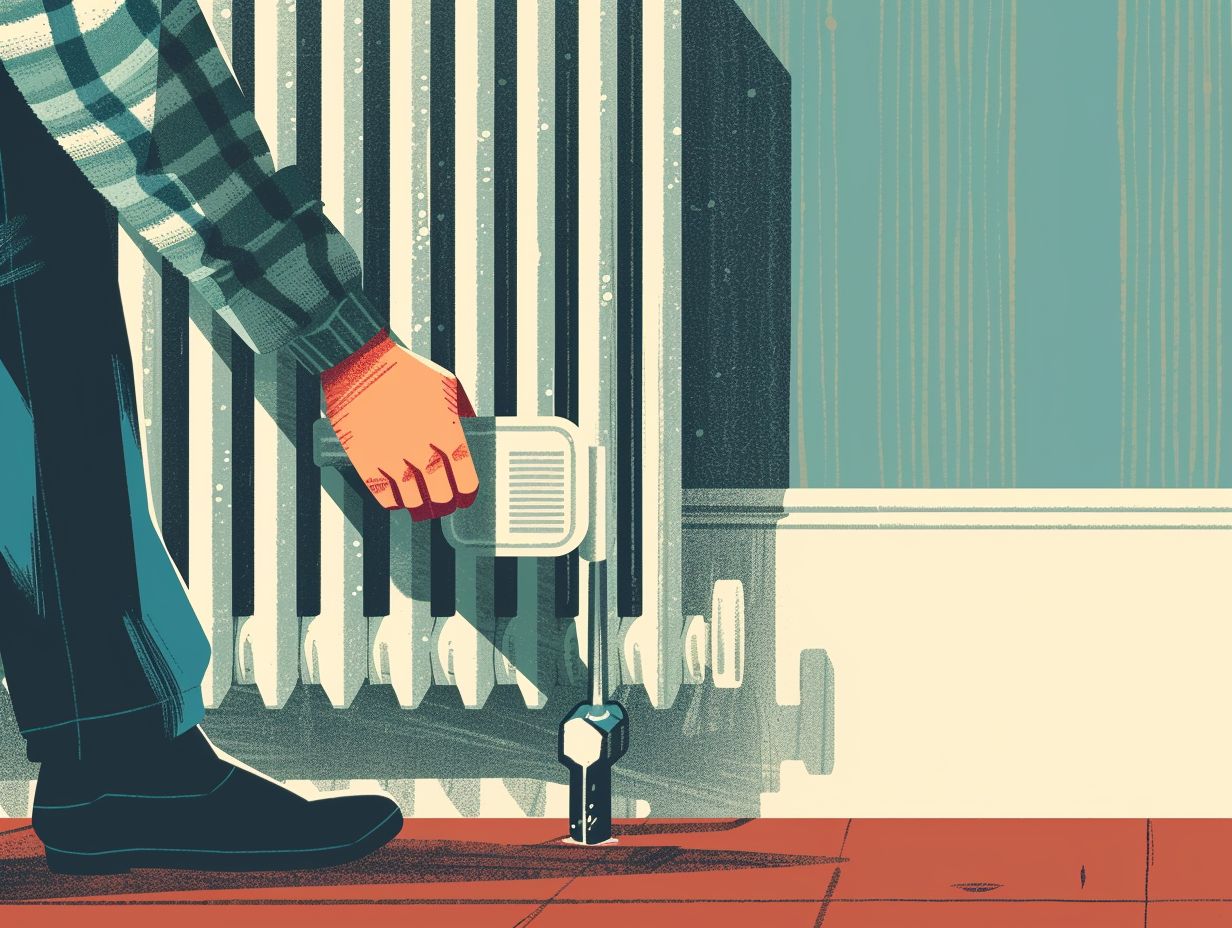
Bleeding traditional radiators helps to release any trapped air from the system, allowing the hot water to flow freely and evenly. This improves the efficiency of the radiator and ensures that it heats up properly.
How do I know if my traditional radiators need to be bled?
If your radiator is not heating up properly, despite the boiler being on and functioning correctly, it could be a sign that there is trapped air in the system. Another indication is if certain parts of the radiator feel cold while others are hot.
How often should I bleed my traditional radiators?
It is recommended to bleed your radiators at least once a year. However, if you notice any issues with uneven heating or a drop in efficiency, it is best to bleed them more often.
What tools do I need to bleed traditional radiators?
The only tool you need to bleed traditional radiators is a radiator key, which can be purchased at most hardware stores. You may also need a cloth to catch any water that may drip during the process.
Can I bleed my traditional radiators myself or do I need a professional?
Bleeding traditional radiators is a simple process that can be done by most homeowners. However, if you are uncomfortable or unsure, it is always best to hire a professional to ensure it is done correctly.
Are there any safety precautions I should take when bleeding traditional radiators?
Yes, it is important to turn off your boiler before bleeding radiators to avoid any potential injuries from hot water. Additionally, be sure to use a cloth to catch any water that may drip and protect your floors.

